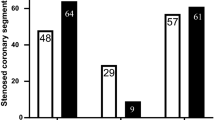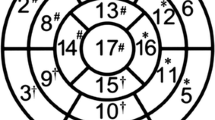Abstract
Background
The effective non-invasive identification of coronary artery disease (CAD) and its proper referral for invasive treatment are still unresolved issues. We evaluated our quantification of myocardium at risk (MAR) from our second generation 3D MPI/CTA fusion framework for the detection and localization of obstructive coronary disease.
Methods
Studies from 48 patients who had rest/stress MPI, CTA, and ICA were analyzed from 3 different institutions. From the CTA, a 3D biventricular surface of the myocardium with superimposed coronaries was extracted and fused to the perfusion distribution. Significant lesions were identified from CTA readings and positioned on the fused display. Three estimates of MAR were computed on the 3D LV surface on the basis of the MPI alone (MARp), the CTA alone (MARa), and the fused information (MARf). The extents of areas at risk were used to generate ROC curves using ICA anatomical findings as reference standard.
Results
Areas under the ROC curve (AUC) for CAD detection using MARf was 0.88 (CI = 0.75-0.95) and for MARp and MARa were, respectively 0.82 (CI = 0.69-0.92) and 0.75 (CI = 0.60-0.86) using the ≥70% stenosis criterion. AUCs for CAD localization (all vessels) using MARf showed significantly higher performance than either MARa or MARp or both.
Conclusions
Using ICA as the reference standard, MAR as the quantitative parameter, and AUC to measure diagnostic performance, MPI-CTA fusion imaging provided incremental diagnostic information compared to MPI or CTA alone for the diagnosis and localization of CAD.





Similar content being viewed by others
Abbreviations
- 1G:
-
First generation
- 2G:
-
Second generation
- MAR:
-
Myocardium at risk index
- MARp :
-
Physiological MAR
- MARa :
-
Anatomical MAR
- MARf :
-
Fused myocardium at risk
- MPR:
-
Multi-planar reformatting
- DS:
-
Degree of stenosis
- MIP:
-
Maximum intensity projections
- AUC:
-
Area under the ROC curve
References
Blankstein R, Di Carli M. Integration of coronary anatomy and myocardial perfusion imaging. Nat Rev Cardiol 2010;7:226-36.
Bax JJ, Beanlands RS, Klocke FJ, Knuuti J, Lammertsma AA, Schaefers MA, et al. Diagnostic and clinical perspective of fusion imaging in cardiology: Is the total greater than the sum of its parts? Heart 2007;93:16-22.
Piccinelli M, Garcia EV. Multimodality image fusion for diagnosing coronary artery disease. J Biomech Res 2013;27:439-551.
Santana C, Garcia EV, Faber TL, Sirineni GKR, Esteves FP, Sanyal R, et al. Diagnostic performance of fusion of myocardial perfusion imaging (MPI) and computed tomography coronary angiography. J Nucl Cardiol 2009;16:201-11.
Peifer JW, Ezquerra NF, Cooke CD, Mullick R, Klein L, Hyche ME, et al. Visualization of multimodality cardiac imagery. IEEE Trans Biomed Eng 1990;37:744-56.
Faber TL, Cooke CD, Peifer JW, Pettigrew RI, Vansant JP, Leyendecker JR, et al. Three-Dimensional displays of left ventricular epicardial surface from standard cardiac SPECT perfusion quantification techniques. J Nucl Med 1995;36:697-703.
Faber TL, Santana CA, Garcia EV, Candell-Riera J, Folks RD, Peifer JW, et al. Three-dimensional fusion of coronary arteries with myocardial perfusion distributions: Clinical validation. J Nucl Med 2004;45:745-53.
Faber TL, Santana CA, Piccinelli M, Nye J, Votaw JR, Garcia EV, et al. Automatic alignment of myocardial perfusion images with contrast-enhanced cardiac computed tomography. IEEE Trans Nucl Sci 2011;58:2296-302.
Lowe JE, Reimer KA, Jennings RB. Experimental infarct size as a function of the amount of myocardium at risk. Am J Pathol 1978;90:363-80.
Lee JT, Ideker RE, Reimer KA. Myocardial infarct size and location in relation to the coronary vascular bed at risk in man. Circulation 1981;64:526-34.
Garcia EV, Faber TL, Cooke CD, Folks RD, Chen J, Santana C. The increasing role of quantification in nuclear cardiology: The Emory approach. J Nucl Cardiol 2007;14:420-32.
Seiler C, Kirkeeide RL, Gould KL. Measurement from arteriograms of regional myocardial bed size distal to any point in the coronary vascular tree for the assessing anatomic area at risk. J Am Coll Cardiol 1993;21:783-97.
DeLong ER, DeLong DM, Clarke-Patterson DL. Comparing the areas under two or more correlated receiver operating characteristic curves: A non-parametric approach. Biometrics 1988;44:837-45.
Rispler S, Keidar Z, Ghersin E, et al. Integrated single-photon emission computed tomography and computed tomography coronary angiography for the assessment of hemodynamically significant coronary artery lesions. J Am Coll Cardiol 2007;49:1059-67.
Gaemperli O, Schepis T, Valenta I, et al. Cardiac image fusion from stand-alone SPECT and CT: Clinical experience. J Nucl Med 2007;48:696-703.
Slomka PJ, Cheng VY, Dey D, et al. Quantitative analysis of myocardial perfusion SPECT anatomically guided by co-registered 64-slice coronary CT angiography. J Nucl Med 2009;50:1621-30.
Gould KL, Lipscomb K, Hamilton GW. Physiologic basis for assessing critical coronary stenosis. Am J Cardiol 1974;33:87-94.
Tonino PA, Fearon WF, DeBruyne B, Oldroyd KG, Leesar MA, Ver Lee PN, et al. Angiographic versus functional severity of coronary artery stenoses in the FAME study fractional flow reserve versus angiography in multivessel evaluation. J Am Coll Cardiol 2010;55:2816-21.
De Bruyne B, Pijls NH, Kalesan B, Barbato E, Tonino PA, Piroth Z, et al. Fractional flow reserve-guided PCI versus medical therapy in stable coronary disease. N Engl J Med 2012;367:991-1001.
Bateman TM, Gould KL, Di Carli MF. Quantitation of myocardial blood flow. J Nucl Cardiol 2015;22:571-8.
Piccinelli M, Faber TL, Arepalli CD, Appia V, Vinten-Johansen J, Schmarkey SL, et al. Automatic detection of left and right ventricles from CTA enables efficient alignment of anatomy with perfusion data. J Nucl Cardiol 2014;21:96-108.
Einstein AJ, Berman DS, Min JK, et al. Patient-centered imaging: shared decision making for cardiac imaging procedures with exposure to ionizing radiation. J Am Coll Cardiol 2014;63:1480-9.
Acknowledgments
Our colleague Dr. Tracy L. Faber was the originator and leader of this project until her passing on March 24, 2012. This work was supported in part by NIH grant R01-HL-085417 from NHLBI. Dr. Piccinelli’s work was funded by a Postdoctoral grant from the AHA SE chapter award number 14POST20150001.
Disclosure
Some of the authors (EVG, RDF, CDC) receive royalties from the sale of the Emory Cardiac Toolbox and have equity positions with Syntermed, Inc. The terms of these arrangements have been reviewed and approved by Emory University in accordance with its conflict of interest policies. The remaining authors do not have any conflicts of interest.
Author information
Authors and Affiliations
Corresponding author
Additional information
The authors of this article have provided a PowerPoint file, available for download at SpringerLink, which summarises the contents of the paper and is free for re-use at meetings and presentations. Search for the article DOI on www.SpringerLink.com.
All editorial decisions for this article, including selection of reviewers and the final decision, were made by guest editor Andrew J. Einstein, MD, PhD, Associate Professor of Medicine (in Radiology), Columbia University.
Electronic supplementary material
Below is the link to the electronic supplementary material.
Rights and permissions
About this article
Cite this article
Piccinelli, M., Santana, C., Sirineni, G.K.R. et al. Diagnostic performance of the quantification of myocardium at risk from MPI SPECT/CTA 2G fusion for detecting obstructive coronary disease: A multicenter trial. J. Nucl. Cardiol. 25, 1376–1386 (2018). https://doi.org/10.1007/s12350-017-0819-x
Received:
Revised:
Published:
Issue Date:
DOI: https://doi.org/10.1007/s12350-017-0819-x




